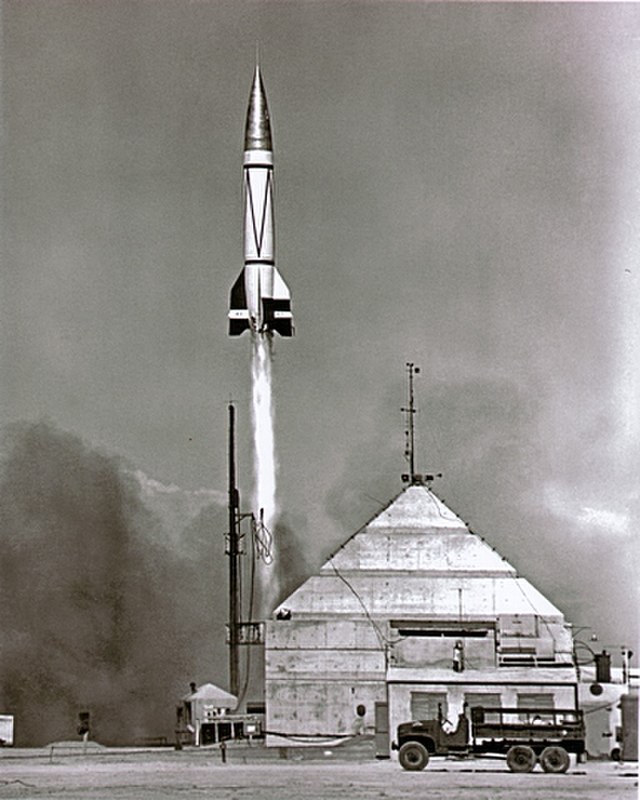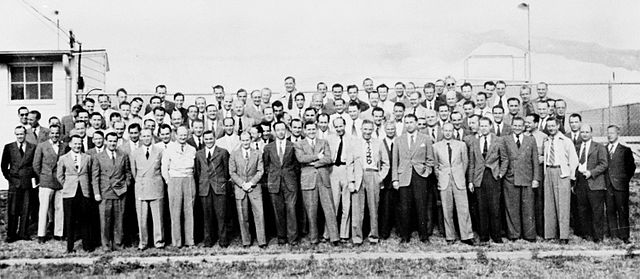On June 14, 1949, a rhesus monkey named Albert II made history by becoming the first mammal—and the first monkey—to travel into space. Strapped into the nose cone of a repurposed German V-2 rocket, Albert II reached an altitude of 83 miles (134 kilometers), just past the Kármán line, the internationally recognized boundary of space. While his journey was tragically fatal due to parachute failure during reentry, Albert II’s brief flight marked a turning point in the history of aerospace research and the eventual human quest for space exploration.
Albert II’s flight was part of a top-secret program by the United States Air Force and the Aeromedical Field Laboratory, which had begun in earnest after World War II. Following the Allied seizure of Nazi rocket technology and key personnel—most notably through Operation Paperclip—the U.S. sought to convert the German V-2 ballistic missile into a platform for high-altitude biological research. By launching animals into space, American scientists hoped to answer a critical set of questions: Could life survive the vacuum, radiation, and g-forces of space travel? Would mammalian biology be fundamentally altered or destroyed by the experience? And could humans one day follow?
Albert II was not the first monkey slated for such a mission. A year earlier, a monkey simply named Albert I had been launched aboard a similar V-2, but his flight failed to reach space, topping out at about 39 miles before ending in mechanical failure. Nevertheless, the Air Force pressed on. Albert II’s mission was equipped with more advanced life-support systems, telemetry instruments, and physiological monitors designed to track breathing, heartbeat, and neurological activity during the flight. The rocket launched from White Sands Proving Ground in New Mexico, a site that would become central to U.S. missile and space testing for decades.
The V-2 carrying Albert II soared past the edge of space in just over three minutes. During the flight, biomedical sensors transmitted critical data back to Earth, providing researchers with their first direct insights into how space conditions affected a living organism. The monkey reportedly remained alive and in good condition throughout the ascent and weightless apogee. Unfortunately, disaster struck during reentry: a parachute malfunction caused the capsule to crash, killing Albert II on impact.
Despite the tragedy, the scientific significance of the flight could not be overstated. Albert II’s journey demonstrated that complex mammals could survive the rigors of launch and the environment of outer space—at least temporarily—without catastrophic biological damage. His sacrifice laid essential groundwork for future missions, including the development of space capsules with improved life-support and recovery systems.
Throughout the 1950s and early 1960s, dozens of animals—including monkeys, dogs, mice, and even fruit flies—would follow Albert II into the upper atmosphere and beyond. Each mission contributed incremental but vital data, helping scientists design safer spacecraft for eventual human occupants. Just over a decade after Albert II’s pioneering flight, Soviet cosmonaut Yuri Gagarin would orbit the Earth in 1961, followed by American astronaut Alan Shepard’s suborbital flight that same year.
Albert II’s story remains a poignant and often overlooked chapter in the history of space exploration. Unlike later animal astronauts such as Laika, the Soviet space dog who became an international symbol, Albert II’s name and image never graced postage stamps or popular films. Yet his mission was no less groundbreaking. In crossing the threshold of space, this anonymous primate helped prove that the stars were not forever out of reach—and that the age-old human dream of spaceflight might finally be realized.
Today, Albert II’s flight is remembered as a landmark event not just in the annals of science, but in the broader human narrative of exploration. Though he never returned, the path he blazed would one day carry men and women into orbit, to the Moon, and perhaps eventually to Mars.




